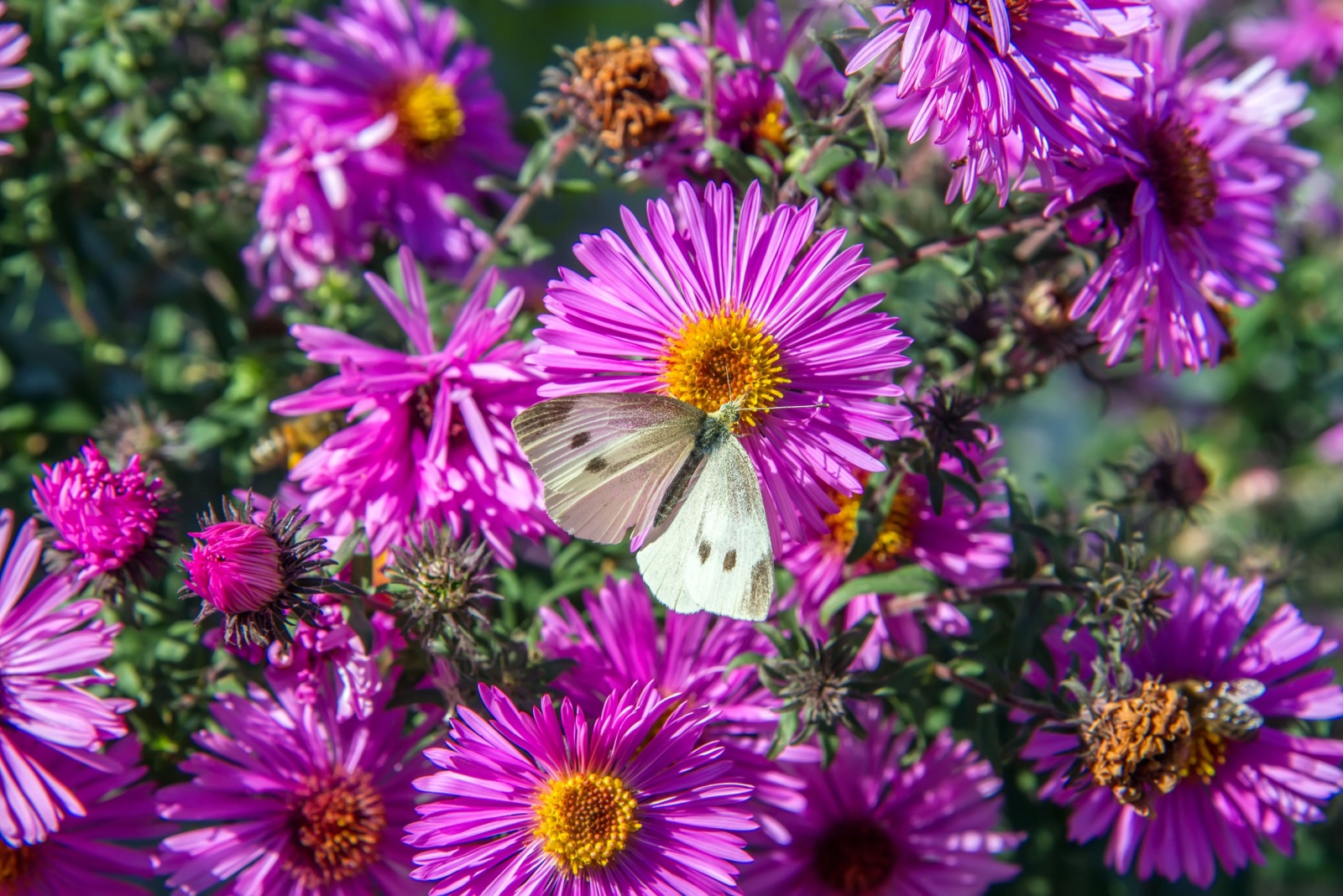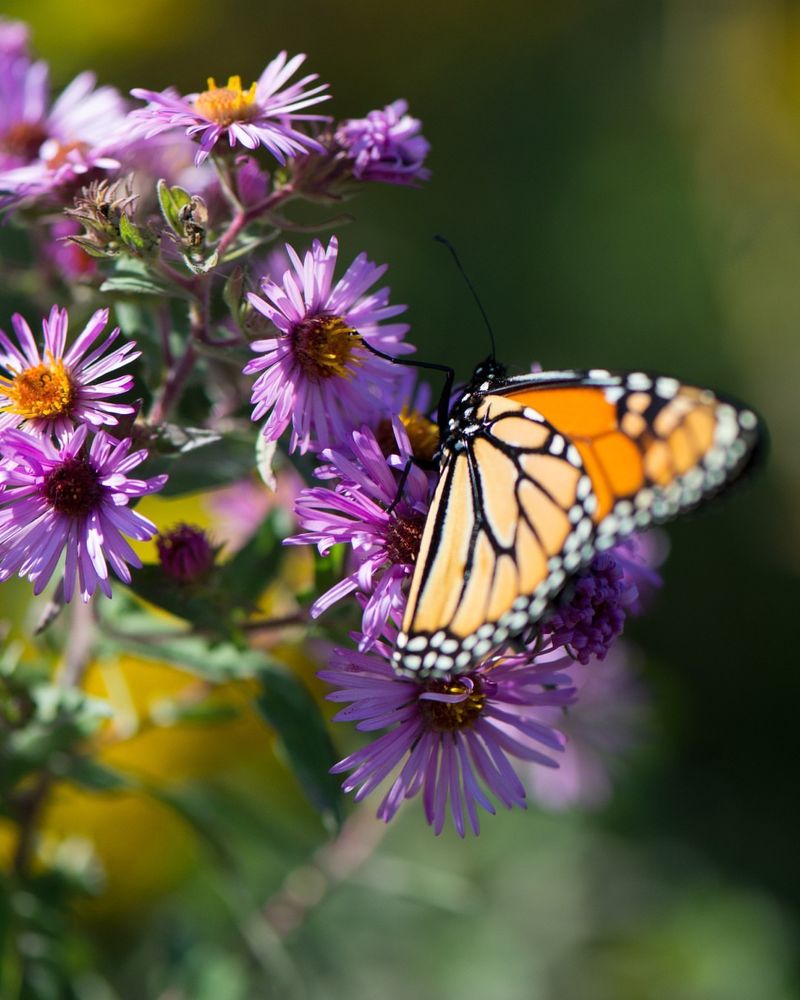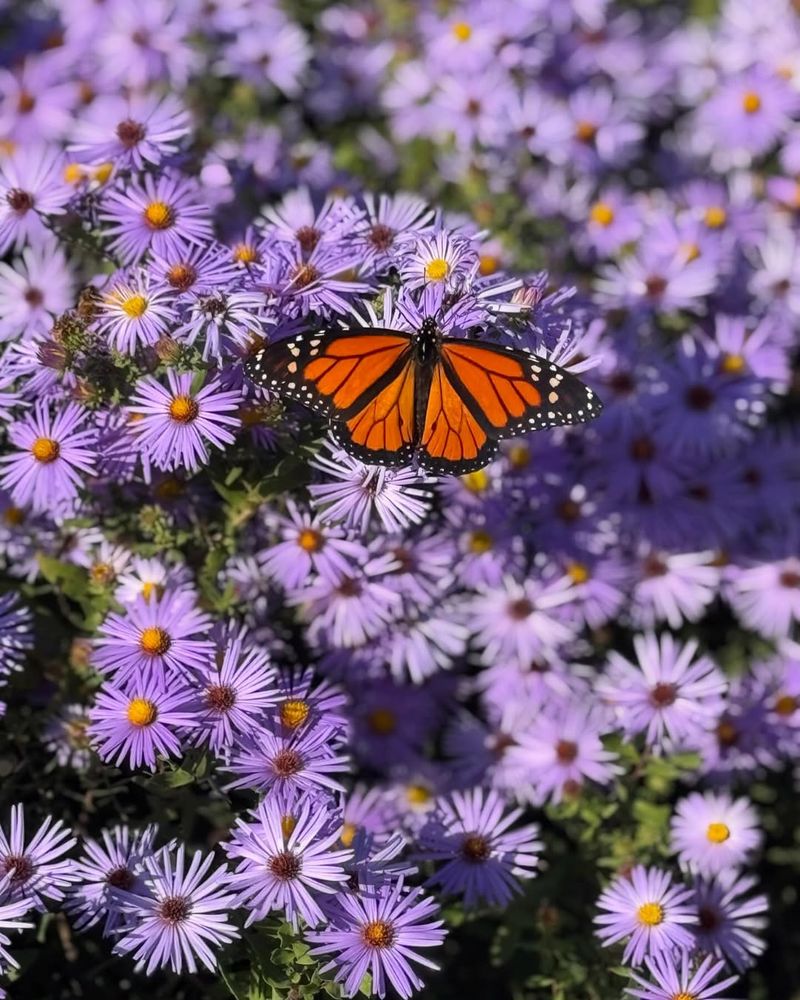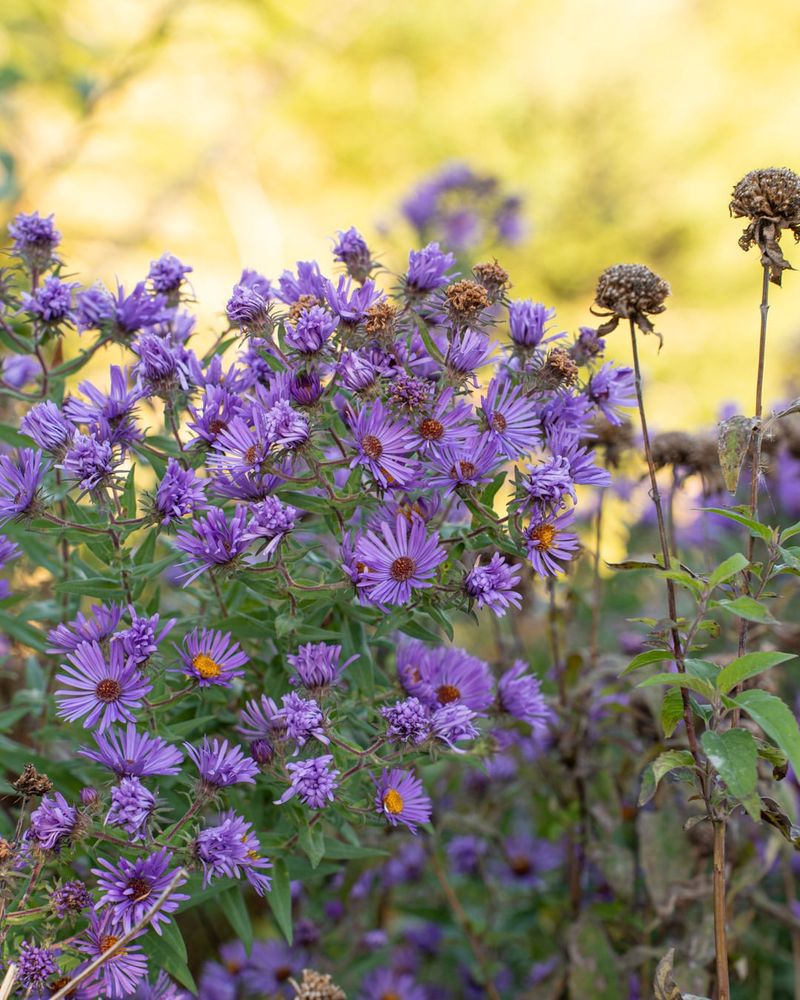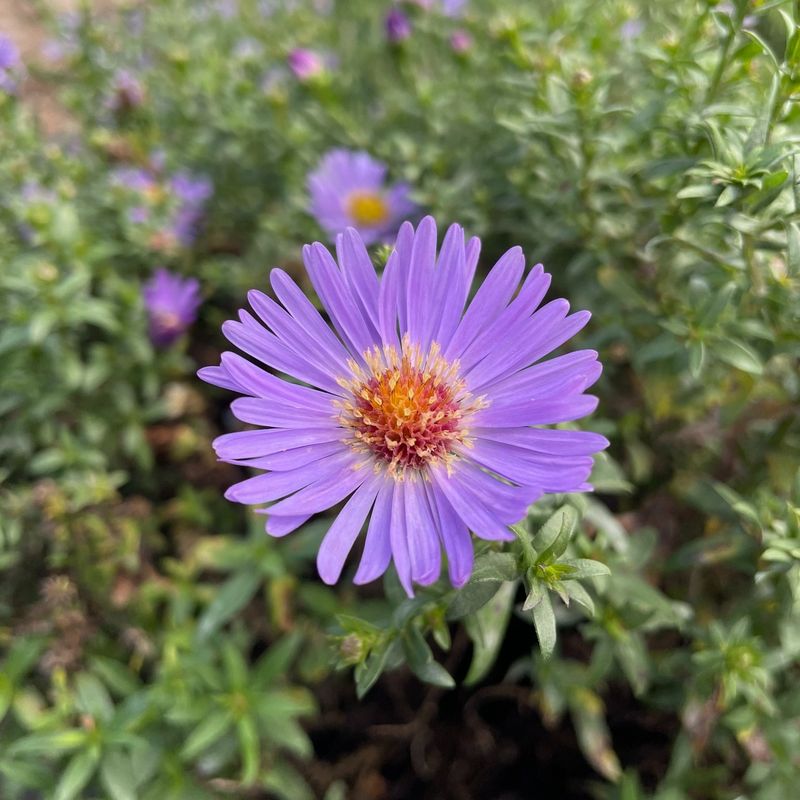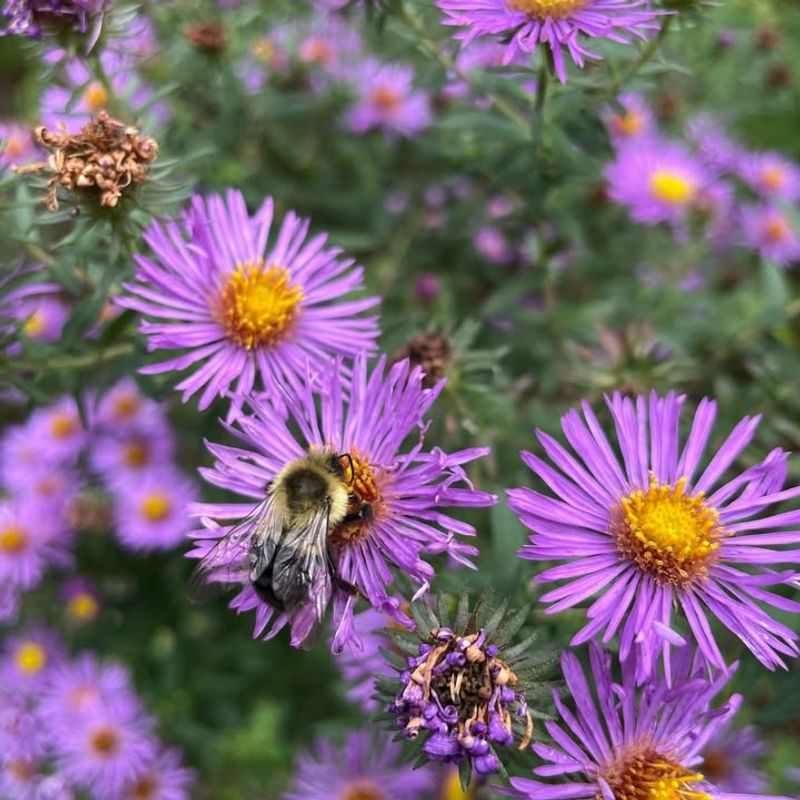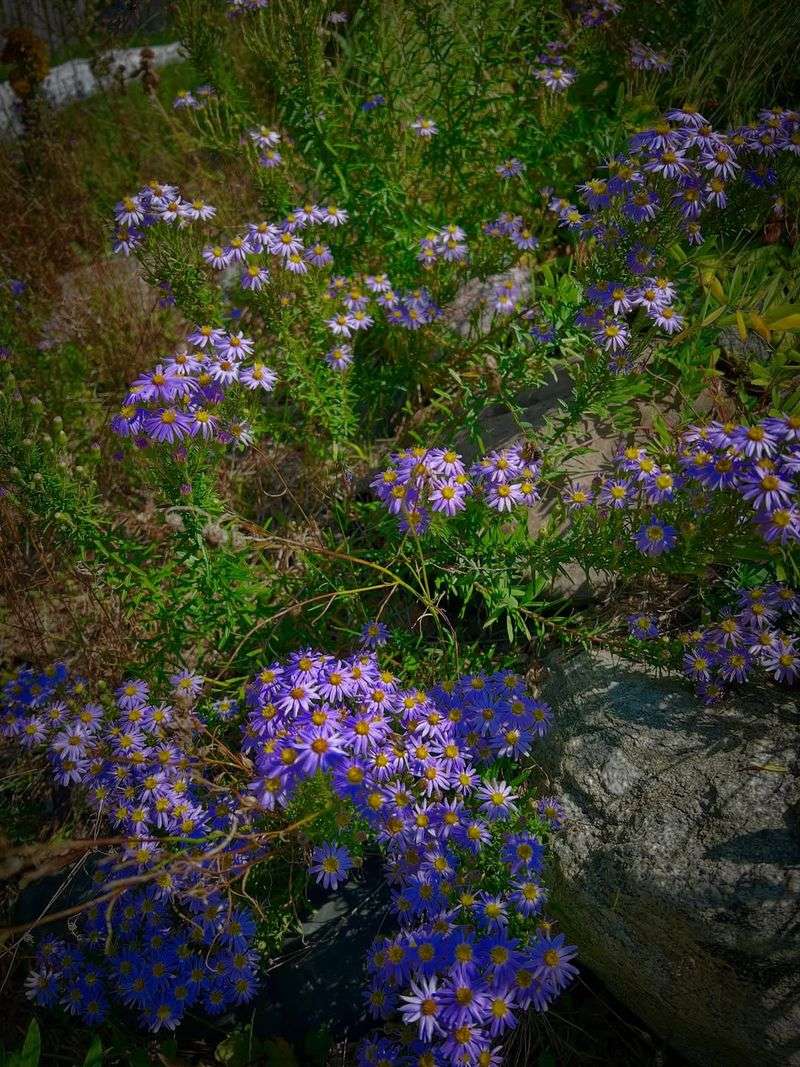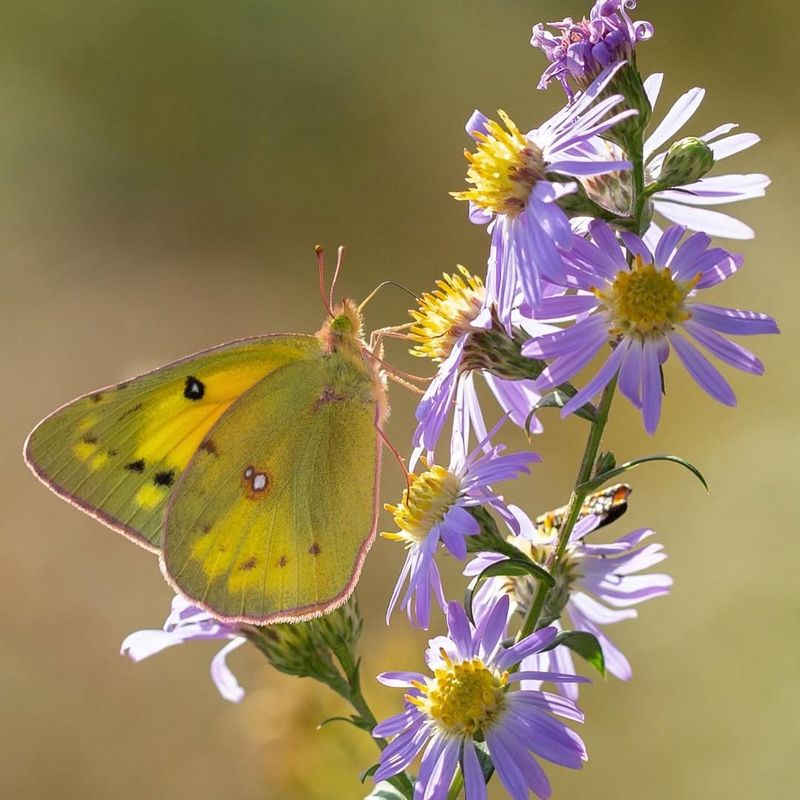When Illinois gardens hit their autumn stride, one native plant quietly steals the show. While most blooms start to fade, this late-season favorite turns into a fluttering masterpiece – drawing clouds of butterflies that seem to dance in midair.
It doesn’t take a full pollinator garden or fancy setup to bring the magic to your backyard; sometimes, it just takes one well-chosen native plant – the aster!
1. Asters Bloom Late When Butterflies Need Them Most
Most flowers finish blooming by late summer, but asters save their show for September and October. Migrating monarchs and other butterflies desperately need nectar sources during fall to fuel their long journeys south.
Without asters, many butterflies would struggle to find enough food. Planting asters in your garden creates a vital rest stop for these traveling insects.
The timing makes asters absolutely essential for butterfly survival during migration season.
2. Over 30 Butterfly Species Visit Illinois Asters
Did you know asters attract more butterfly varieties than almost any other fall flower? Painted ladies, pearl crescents, clouded sulphurs, and various skipper species all flock to these blooms.
Even red admirals and American ladies rely heavily on aster nectar. The flowers produce abundant food that appeals to butterflies with different feeding preferences.
Watching your aster patch becomes like observing a butterfly parade throughout autumn afternoons.
3. Native Asters Require Almost Zero Maintenance
Forget fussy flowers that demand constant attention. Native Illinois asters evolved here over thousands of years, so they handle local weather, soil, and pests without much help from gardeners.
Once established, they rarely need watering except during severe droughts. They resist diseases naturally and multiply on their own each year.
Simply plant them once, and they reward you with beautiful blooms and butterfly visitors for decades to come.
4. Different Aster Varieties Fit Every Garden Space
Whether your garden is tiny or sprawling, an aster variety suits your space perfectly. Smooth asters grow only one to three feet tall, fitting nicely in small beds or containers.
New England asters tower at four to six feet, creating dramatic backdrops. Sky blue asters spread wide but stay medium height.
With purple, pink, white, and blue color options available, you can design exactly the butterfly garden you imagine.
5. Asters Support The Entire Food Chain
Beyond butterflies, asters feed bees, moths, and beneficial insects that pollinate crops and control pests. After flowers fade, goldfinches and sparrows feast on aster seeds throughout winter.
Caterpillars of pearl crescent butterflies actually eat aster leaves as their only food source. Planting asters creates homes and meals for countless creatures.
Your single plant choice ripples through nature, supporting wildlife from insects to birds year-round.
6. Planting Asters Helps Restore Illinois Prairies
Illinois once boasted 22 million acres of prairie, but farming reduced that to less than one percent today. Asters were cornerstone plants in those lost ecosystems.
When you plant native asters, you recreate tiny pieces of original Illinois habitat right in your yard. You help preserve plant genetics that might otherwise disappear forever.
Every aster planted represents a small victory for conservation and connects your garden to Illinois history.
7. Asters Keep Blooming Through Light Frosts
While tender annuals die at the first freeze, tough asters keep producing flowers even after light frosts hit. Their blooms often last until November in Illinois, extending butterfly feeding opportunities.
Cold-hardy flowers mean late-season butterflies find food when almost nothing else remains blooming. Some asters survive several freezing nights before finally going dormant.
This remarkable toughness makes asters true champions of the autumn garden and butterfly lifelines.

